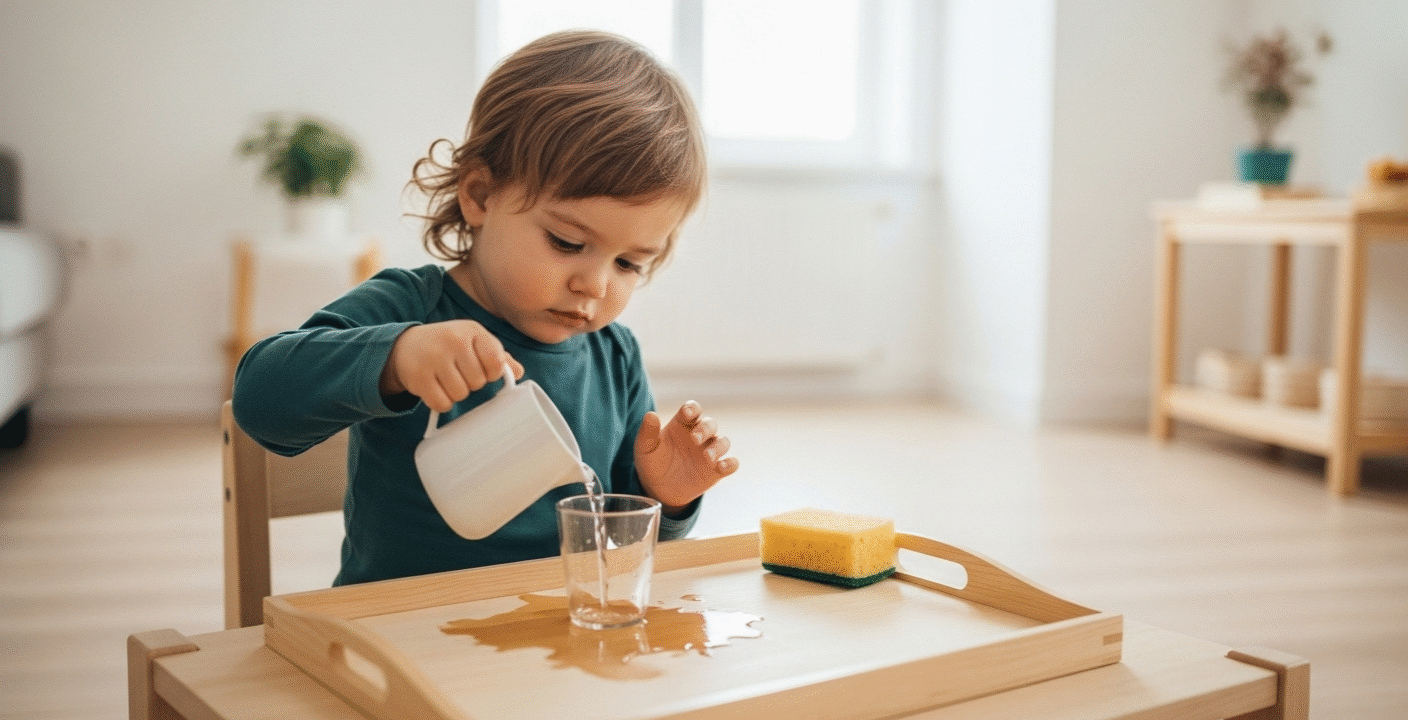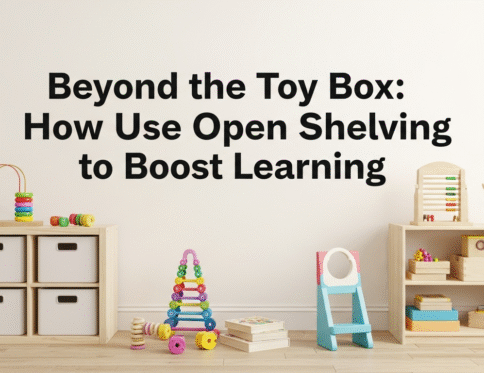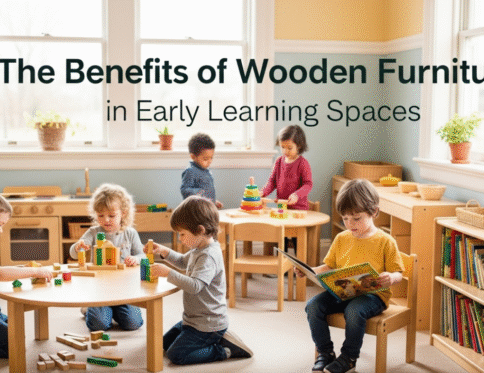As parents, we watch our toddlers navigate the world with a mix of awe and trepidation. They are wired for discovery, their little hands eager to touch, explore, and understand everything. The Montessori for toddlers approach isn’t about rigid rules or expensive materials; it’s a philosophy of respect for the child’s natural drive to learn. It’s about taking small, intentional steps that lead to big discoveries in toddler development.
As a parent who has integrated these principles into my own home, I’ve seen firsthand how focusing on independent play can transform a toddler’s confidence. This guide moves beyond simple definitions to offer you practical, actionable strategies. It is designed to be a comprehensive resource, providing the “information gain” needed to truly implement
Montessori at home and foster a deep love of learning in your child.
The Core Principles: Seeing Through Your Toddler’s Eyes
Understanding the philosophy is the first step. The Montessori method is built on a few foundational ideas that are particularly powerful for the toddler years.
- Respect for the Child: This is the cornerstone. We respect a toddler’s need to do things for themselves, even if it’s slower or messier. We trust their ability to choose their own activities and work at their own pace.
- The Absorbent Mind: Toddlers are like sponges, effortlessly soaking up information from their environment. This is why a thoughtfully prepared space is so crucial for this age group.
- The Prepared Environment: This is a key concept in Montessori for toddlers. It means creating a space that is safe, accessible, and nurturing of independence. Everything from their toys to their cup should be at their level, allowing them to engage with their world without constantly needing adult help.
- Follow the Child: We observe our child’s interests and “follow” them, providing tools and activities that align with their current developmental passions, whether it’s stacking, pouring, or sorting.
Creating a “Yes” Space: The Prepared Environment at Home
Setting up a prepared environment is the most impactful step you can take to bring Montessori for toddlers into your home. The goal is to create a space where you can say “yes” to your child’s explorations as much as possible.
- Low, Open Shelving: Swap out a giant toy box for low, open shelves. Display a limited number of activities (5-8 is a good start) in baskets or trays. This allows your child to see their choices clearly, make a selection, and learn to put it back when they are done.
- Child-Sized Furniture: A small table and chair, a low stool for putting on shoes, and accessible hooks for their coat give your child a sense of belonging and capability in their own home.
- Accessibility in the Kitchen: Create a low drawer with their own plates, cups, and utensils. A small pitcher allows them to pour their own water. This not only builds practical skills but also immense pride. As noted in E-E-A-T guidelines, sharing these first-hand, lived insights is crucial for creating authentic, helpful content.
Practical Life Activities: The Heart of Montessori for Toddlers
Practical life activities are purposeful tasks that mimic everyday adult life. These are the most important “work” for a toddler, as they develop concentration, fine motor skills, and a sense of responsibility.
- Pouring: Start with pouring dry goods like beans or pasta from one small pitcher to another. As they gain control, move to pouring water.
- Spooning and Scooping: Set up a tray with two bowls, one empty and one filled with something like rice or lentils, and a child-sized spoon. The simple act of transferring from one bowl to another is deeply engaging.
- Care of Self: Provide a small brush and comb at their level. Show them how to wash their hands at a low sink or with a bowl of water. These tasks foster body awareness and self-care.
- Care of Environment: Give them a small cloth to wipe up spills or a dustpan and brush to sweep up crumbs. Involving them in the care of their home gives them a sense of contribution and importance.
This focus on real-world tasks provides a depth of experience that is difficult for AI-generated content to replicate, directly aligning with Google’s intensified focus on content that demonstrates genuine, hands-on experience.
A Simple Checklist for Starting Montessori at Home
To help you begin, here is a “linkable asset” checklist designed to provide unique value and make these concepts easy to implement.
- 1. Declutter and Rotate: Remove excess toys and display a few activities on low, open shelves.
- 2. Create a Cozy Corner: Set up a small reading nook with a few board books facing forward.
- 3. Designate a “Practical Life” Shelf: Start with one or two activities, like pouring beans or spooning pasta.
- 4. Make a “Self-Care” Station: Place a low mirror with a small brush and cloth nearby.
- 5. Foster Kitchen Independence: Create an accessible drawer with their own cup and plate.
- 6. Observe and Follow: Pay attention to what your child is drawn to and adjust activities accordingly.
Ultimately, embracing Montessori for toddlers is about shifting your perspective. It’s about seeing your child as a capable and competent individual on a grand journey of discovery. By preparing their environment and offering them trust, you provide the tools they need for a lifetime of confident, joyful learning.
Disclaimer: This blog post is for informational purposes only and is based on established Montessori principles and personal experience. It does not constitute professional educational or developmental advice. Please consult with a certified Montessori educator or a child development professional for guidance tailored to your child’s specific needs.






